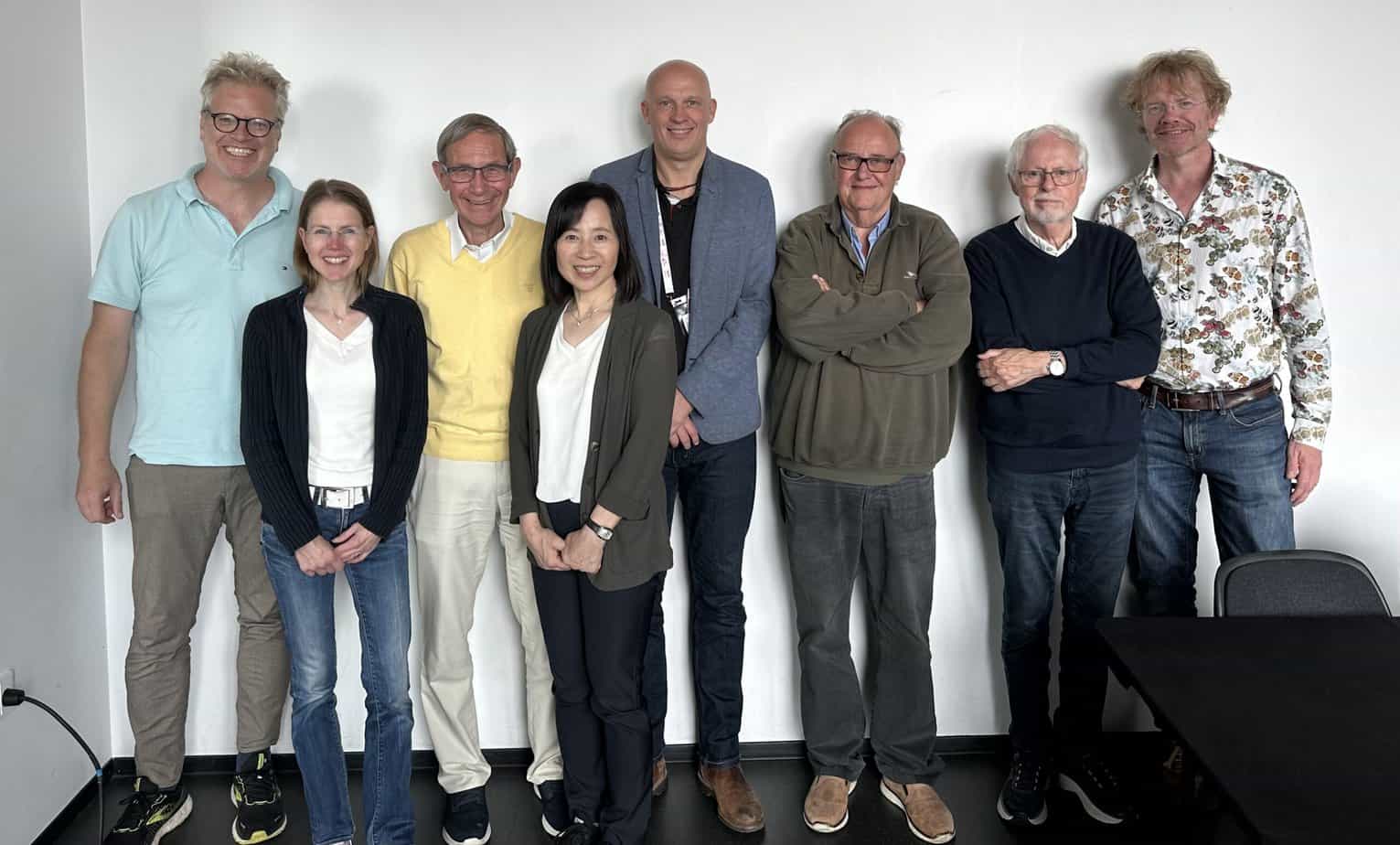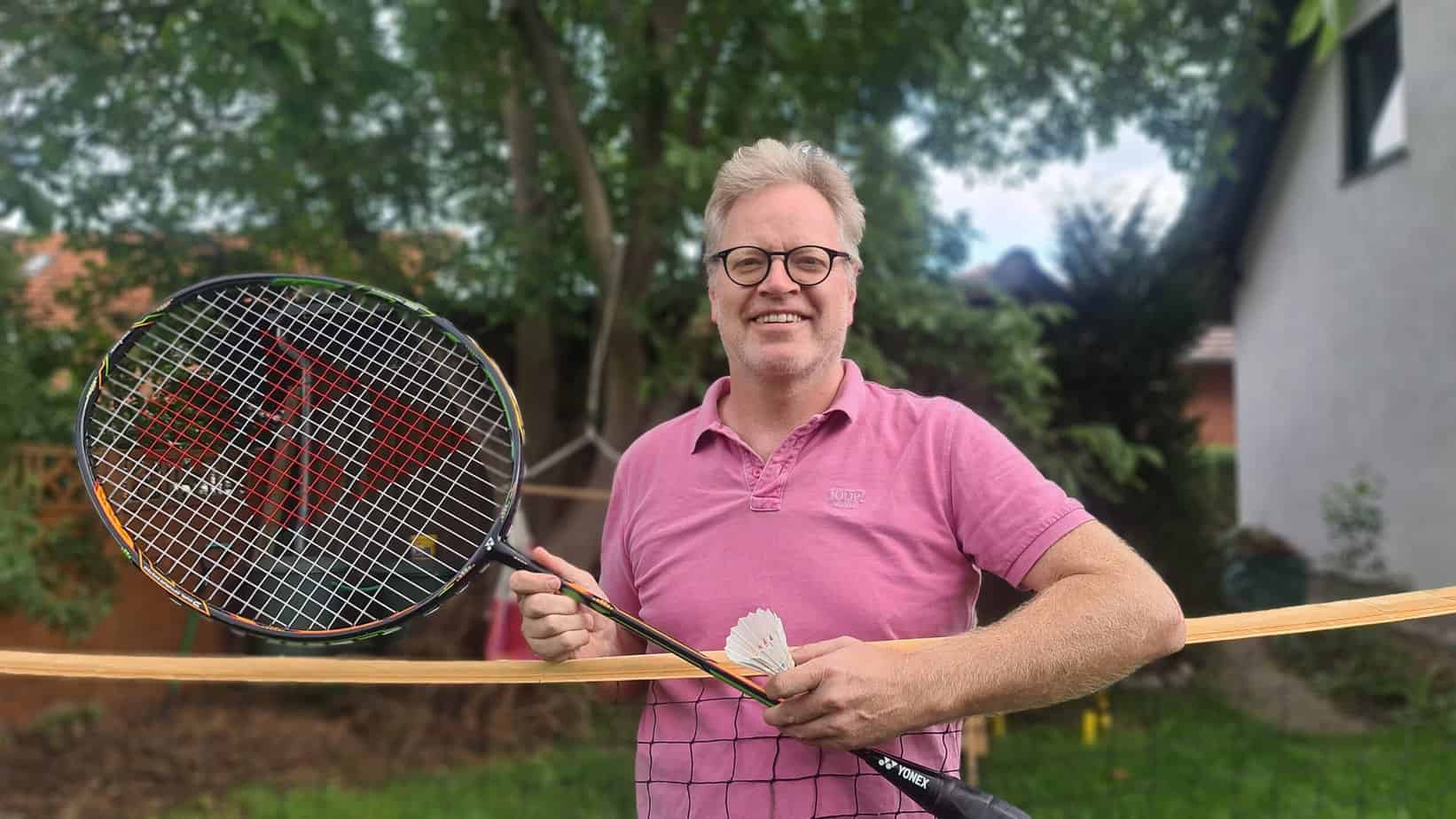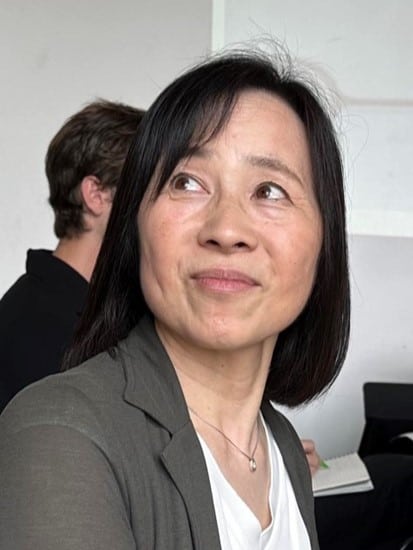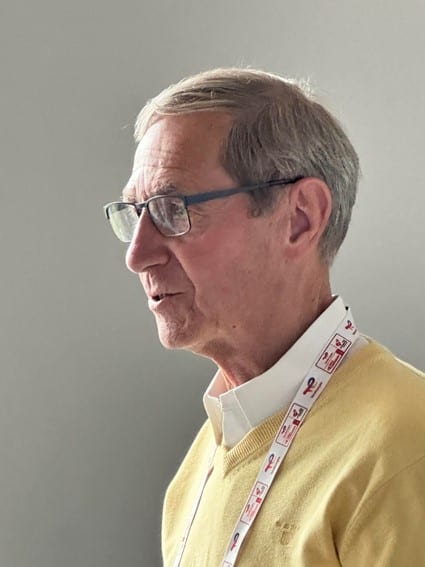I forbindelse med VM i Royal Arena var Badmintonmuseet - Badminton Danmarks historiske udvalg - arrangør af et “Badminton History Gathering” med dansk og international deltagelse af tyske og japanske badminton historiske entusiaster.
Badmintonmuseet kan her bringe et summary (på engelsk) fra mødet, og et summary de to meget interessant indlæg fra hhv. tyske Bernd-Volker Brahms og japanske Chikako Ikarugi.
Torsten Berg fra Badmintonmuseet gav deltagerne et historisk tilbageblik fra de fire gange Danmark tidligere har haft værtsskabet for VM.

Badminton History Gathering in Copenhagen 25th August 2023
Badmintonmuseet, a Committee under Badminton Denmark, organised on 25th August 2023 a gathering of interested parties in connection with the World badminton Championships. 11 participants, including four from outside Denmark, joined the gathering.
The Committee Chairman, Ole Jacobsen bid the participants welcome, and following a short introduction of each of the persons present, he left the floor to Torsten Berg, who served to facilitate the deliberations. Torsten emphasised that the main purpose of the gathering was networking and encouraged all present to take part with questions and comments to the presenters.
Bernd-Volker Brahms spoke about his research based on several items from his collection of memorabilia. First about a trophy from the All-England Men's Doubles 1925 and then about an early aluminium racket, the Birmal, also from 1925. A lively discussion ensued, and almost every participant contributed. For a summary of the lessons - see below.
Chikako Ikarugi spoke about the history of badminton in Japan and gave a demonstration of the early Japanese fore-runner called Hanetsuki. This contribution, too, led to interesting questions and answers.
Torsten Berg gave an account of the history of the four previous World Badminton Championships held in Denmark and the impact they have had on the game in the country.
A general discussion concluded the deliberations, and here it was suggested that it should be investigated whether the Badminton Europe History Working Group could be revitalised. Moreover, it was recommended that similar informal gatherings should be arranged in future, possibly announced more in advance, so that more participants could be attracted. The Olympic Games in Paris could offer an opportunity, and Denmark Open yet another.
The discussion and networking continued over lunch in the nearby canteen.
Summary of the presentations
Bernd-Volker Brahms:
Examples from my research
I wanted to show which ways I use to find out more about certain items of my badminton collection. I made the experience that you can explore and identify so much detailed information which is not published in any publication.
My first example was a trophy, which one of the winners of men's doubles won at the All-England Championships in 1925. I found out that one of the winners - Herbert Uber - is well known.

[pdf-embedder url="https://badmintonmuseet.dk/wp-content/uploads/2023/09/Presentation-Copenhagen-History-Group-25.8.2023_compressed.pdf" title="Presentation Copenhagen - History Group 25.8.2023_compressed"]But about his partner A. K. Jones there were only a few facts. So, I tried to find out more about him and also about the really small trophy (only 12cm high). In the end of my research - which normally never ends - I wrote a two-part story about six English players who travelled to Canada in 1925/1930 to promote badminton (Badminton Sport, 2017, nr. 10 and 11). Participants of the trips included Herbert Uber and Arthur Kenneth Jones. I got help from Sue Peard from Ireland, the daughter of pioneer Frank Devlin.
My second example was a very special and rare metal racket from the year 1925: a Birmal racket. It was an experiment of a company (Birmal from Birmingham, England) which had no experience with producing rackets - not even tennis rackets. I found out a lot of details about the racket and its inventors - especially by several patents. Very helpful in many ways in my research is Geoff Hinder of the National Badminton Museum in Milton Keynes, England.
At the end of the presentation, I suggested two very interesting books from collectors of particular tennis rackets: Siegfried Kübler, Book of Tennis Rackets, 1995, 630 pages plus two supplements; and Robert T. Everitt, Racket Sports Collectibles, 2002, 30 pages. I think it would be great to have a list or better a book about the early badminton rackets and shuttlecocks by certain companies; sources to do this are especially advertisements in magazines like Badminton Gazette but also patents. It will be much work but a valuable job.
My first example was a trophy, which one of the winners of men's doubles won at the All-England Championships in 1925. I found out that one of the winners - Herbert Uber - is well known.
Chikako Ikarugi:
The history of badminton in Japan
My presentation was about the early history of badminton in Japan. First, I introduced a book I wrote that was published last year. My research theme is how badminton has been internationalized since the 1870s, and/or globalized. This book summarized my research of the last 20 years.
The materials include the minutes of the Badminton Association established in 1893, the minutes of the IBF established in 1934, and the magazines such as Badminton Gazette.
Next, I introduced a Japanese shuttlecock game called 'Hanetsuki'. The base of this shuttlecock is made of wood called MUKUROJI. In Japanese kanji, which means that the child has no disease. The wings are likened to a dragonfly. In the old days, mosquitoes transmitted diseases in Japan. It was the dragonfly that ate mosquitoes. It means wishing for the health and growth of children.
The European shuttlecock games were transmitted to Japan in the Edo period 18 th -19 th century. It remains in pictures and illustrations in English textbooks.

Then, I introduced the popularization of badminton in Japan as a competitive sport. One of the earliest examples of badminton rackets being brought to Japan is a racket made in Paris in 1902. One way to popularize badminton in Japan was through the activities of the YMCA. Also, a company called Naruto Sport, which manufactured and sold badminton rackets, translated the rules and started playing on courts in the factory.
The Laws of Badminton published by Naruto Sport in 1934 is considered to be the oldest in Japan. The first translation of the IBF Laws of Badminton was published in 1949. It is written in handwriting, and it complies with the IBF 1939 the Laws of Badminton.
Lastly, I introduced two special rackets that I own. One of them is a bamboo racket (1960s-1970s) made by Sambata (made in Japan). The other one is a racket that was used by Liem Swie King who won the tournament in Kobe in 1981, the predecessor of the Japan Open.
Information about the history of badminton not only in Japan but also in Asia has not been sufficiently disseminated. I would be happy if you could learn even a little about the history of badminton in Japan.
[pdf-embedder url="https://badmintonmuseet.dk/wp-content/uploads/2023/09/Presentation-Copenhagen-History-Group-25.8.2023_Chikako-1.pdf" title="Presentation Copenhagen - History Group 25.8.2023_Chikako (1)"]
Torsten Berg:
The World Championships in Denmark - from a Danish perspective
In the early history of the International Badminton Federation (IBF), the open All-England Championships (established 1899) were considered an unofficial World Badminton Championships. Hence it was with some reluctance that IBF received the response from the IOC - the International Olympic Committee - upon a request driven primarily by Stellan Mohlin for Olympic inclusion, that two conditions were to be met first, Continental organisation and an official World Championships. Both conditions were, however, met. EBU was established in 1967 and the first official World Championships were allocated to Malmö, Sweden, as a tribute to Stellan.
The first WBC was a major sporting success for Denmark, with victories to Flemming Delfs in MS, Lene Køppen in WS and Steen Skovgaard/Lene Køppen in XD. The success helped to increase interest and membership in Danish badminton clubs and to further raise the profile of badminton in Denmark.

The third WBC was allocated to Brøndby, Copenhagen in 1983. To promote a renewed application to join the Olympic Games, IOC President Juan Antonio Samaranch was invited. Following the reunification in 1981, the Chinese could play, and Li Lingwei won the WS and the WD were also won by China. The pinnacle was a breathtaking MS final in three close games, where young Icuk Sugiarto (INA) beat favourite Liem Swie King (also INA). Toward the end of this match, President Samaranch, sitting in the front row between the Queen and IBF President Craig Reedie, burst out to Sir Craig: "This sport we must have!" A milestone in badminton history. The success was completed by the Danish MD victory to Jesper Helledie/Steen Fladberg.
The WBC returned to Denmark in 1991, and the organisation, again led by Frede Kruse-Christiansen, now included also the Sudirman Cup. A major achievement was the quality of the TV production by Danmarks Radio directed by Hans Grønfeldt, which led to this team being charged with the production again in the 1992 Olympic Games in Barcelona, contributing to badminton's very successful first appearance in the Games. Sporting success in WBC 1991 was marked by two silver medals to Thomas Lund, in MD with Jon Holst-Christensen and in XD with Pernille Dupont. Thomas followed up with XD victories in 1993 partnering Cathrine Bengtsson (SWE) and in 1995 with Marlene Thomsen (Lund). Several volunteers from the organisation later joined the Federation leadership.
The 1999 WBC and Sudirman Cup in Brøndby will in Denmark be remembered for the WS Final, where Camilla Martin - exhausted at the end of a gruelling three-games thriller against Dai Yun (CHN) chose not to set and won 11-10, to the home crowd's delight. Based on this WBC, the federation established a professional Events organisation as part of the administration, a move that has greatly enhanced the presentation of the Denmark Open, with several innovations.
The 2014 WBC in the Ballerup Velodrome provided a larger venue - the Brøndby Stadium cannot hold enough spectators for the event to break even - but proved a less than ideal venue. Best Danish result was the MD silver to Mathias Boe and Carsten Mogensen. Following Viktor Axelsen's gold medals in MS in 2017 and again in 2022, we now look forward to seeing if he can repeat the success in the 2023 WBC in the very large Royal Arena, taking the presentation to yet another level and being sold out already for the final few days.
